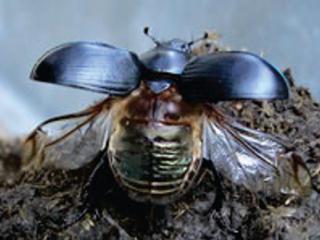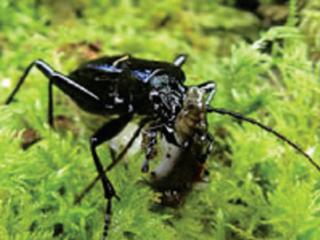How to recognise a beetle

Beetles are insects in the Order Coleoptera – which means ‘sheath-winged’. This refers to their generally most obvious characteristic – they almost always have forewings modified to form protective wing cases (elytra), covering the hind wings (if they have any) used for flight.
Beetles almost invariably have biting mouthparts, with sharp mandibles. Many are predators of other insects or invertebrates; while others are plant-feeders, fungus-feeders, or re-cycle decaying animal or plant remains, including dung.
There are four stages in the life cycle: egg, larva, pupa and adult. Like moths and butterflies, but unlike grasshoppers or bugs, there is a cocoon (or pupal) stage in their life-cycle, and they undergo a ‘complete metamorphosis’ from a larva to the adult. Only a very small number of species have an adult stage that retains a similar form to the larva, such as the female Glow-worm Lampyris noctiluca. There is no nymph stage and a small beetle does not grow any larger, unlike the nymph stages of bugs.
Some other insects have hardened fore wings and can sometimes be tricky to distinguish from beetles. True bugs (Hemiptera) have only partly hardened fore wings and sucking mouthparts. Earwigs (Dermaptera) have short wing cases and chewing mouthparts, but they

also have a pair of long ‘pincers’ at the end of the abdomen.
See Beetle Morphology for labelled diagrams which show the main parts of a beetle’s body.
Beetle Families provides information on all of the beetle families.